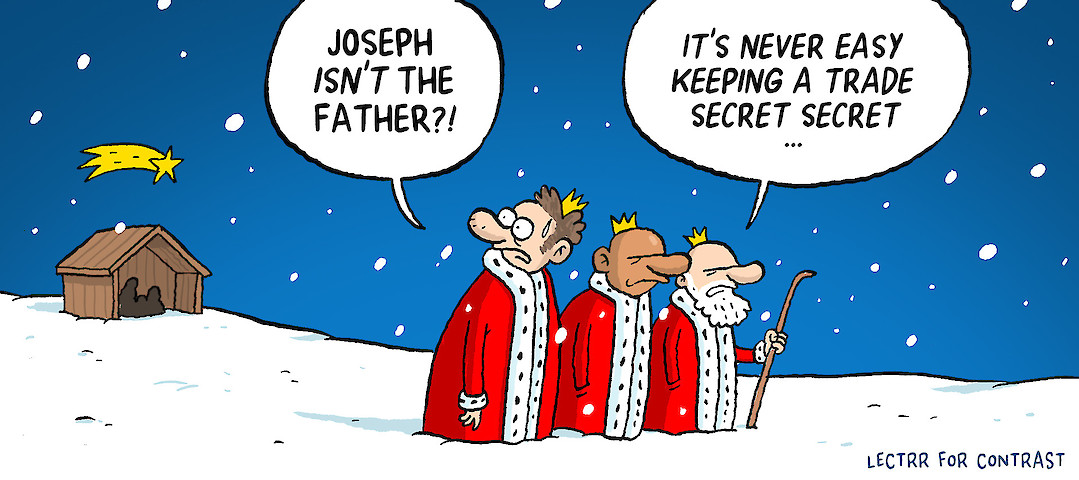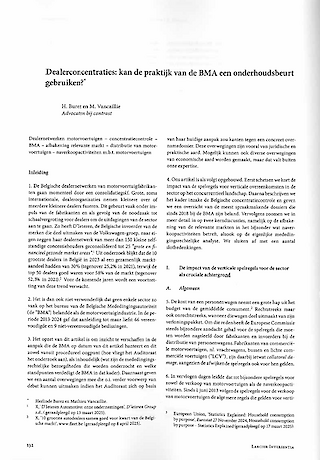In the Picture

Three people can only keep a secret if two are dead. A European recipe for trade secrets.
December 2018Imagine…
As market leader in the production of Christmas lighting, you are today holding your (in the meantime legendary) Christmas party for the leading players in the sector. The atmosphere is exuberant and, as every year, you give an inspiring keynote speech about your company's latest products.
As you leave the stage to resounding applause, you are discretely approached by a customer. He just received an excellent sample from one of your competitors, who apparently - thanks to having copied your production process – has succeeded in manufacturing Christmas lighting of the same quality, but at a much lower price.
You are stunned to hear this terrible news. The bystanders who rush to your side immediately suggest putting together a legal team to help you deal with this.
They quickly talk about qualifying your production process as a trade secret, and the possibility of having your competitor's goods removed from the market. One of the emergency advisors even proposes to "possibly, on the basis of article XI.336/3 section 2 of the Code of Economic Law, as provided by article 12 of the Directive, have the competitor’s goods turned over to a charitable organisation". Audacious, but brilliant! You start pulling yourself together. Christmas is saved. And what a marketing stunt... Not coincidentally one of your trademarks. Or not really so fast?
A brief clarification.
Prompted by a European directive (Directive (EU) 2016/943 on the protection of undisclosed know-how and business information (trade secrets)), many EU Member States have recently given their laws on trade secrets a major overhaul - including Belgium, although in fact prior to this there had not really been any clear legal framework for protecting trade secrets. However, the Act of 30 July 2018 on the protection of trade secrets, which implements the European directive, has changed that situation.
In brief, information qualifies as a 'trade secret' when that information is secret (i.e. not publicly known or easily accessible), therefore has commercial value and is subject to reasonable confidentiality measures. In practice, such information often relates to specific know-how, methods, production processes, marketing concepts, formulas and recipes of companies, but also e.g. customer or supplier lists.
Thanks to the new legislation, trade secret holders can act more effectively against its unlawful acquisition, use or disclosure.
There is unlawful acquisition of a trade secret primarily when this takes place through unauthorised access to, or the unauthorised copying of, material that contains the trade secret or from which it can be deduced.
Unlawful use or disclosure of a trade secret can arise if the trade secret is unlawfully acquired or if a confidentiality agreement or other similar obligation has been breached. Non-disclosure agreements ('NDAs') therefore remain a particularly valuable tool under the new legislation.
If a trade secret is acquired via independent discovery or by research on lawfully obtained products (via so-called 'reverse engineering'), this is lawful acquisition.
The holder of a trade secret that is infringed can turn to the courts to obtain interim measures as well as to claim damages. The law expressly provides that the judge can order that an unlawful acquisition, an unlawful use or an unlawful disclosure of a trade secret be discontinued. In so doing, the judge can prohibit the (further) production or marketing of goods that constitute an infringement of the trade secret. He can have the infringing goods recalled or destroyed, and he can also order the destruction of the materials that contain the trade secret or have them given back to the lawful holder.
Finally, in certain cases the law even provides for handing the infringing goods over to a charitable organisation. In all of this the judge must test the proportionality of the measures demanded by (amongst other things) weighing the value of the trade secret, the effect of the infringement, the conduct of the infringer and the consequences of the measures.
Concretely:
- The European directive on the protection of trade secrets introduces a better legal protection for such secrets. The directive opts for 'minimum harmonisation', so that the EU Member States can provide a protection that is more extensive than that provided by the directive. It thus remains important to carefully examine the national laws and procedural rules.
- Not every use of a trade secret is unlawful. For example, independent development and 'reverse engineering' are in principle authorised. In addition, the law provides for a number of other exceptions and protective measures, which (amongst other things) are designed to protect whistle blowers and employees.
- In Belgium, the new law leaves the competence of the labour and criminal courts unaffected, since the infringement of a trade secret can constitute a violation of the Employment Contract Act as well as being a criminal-law violation.
Want to know more?











